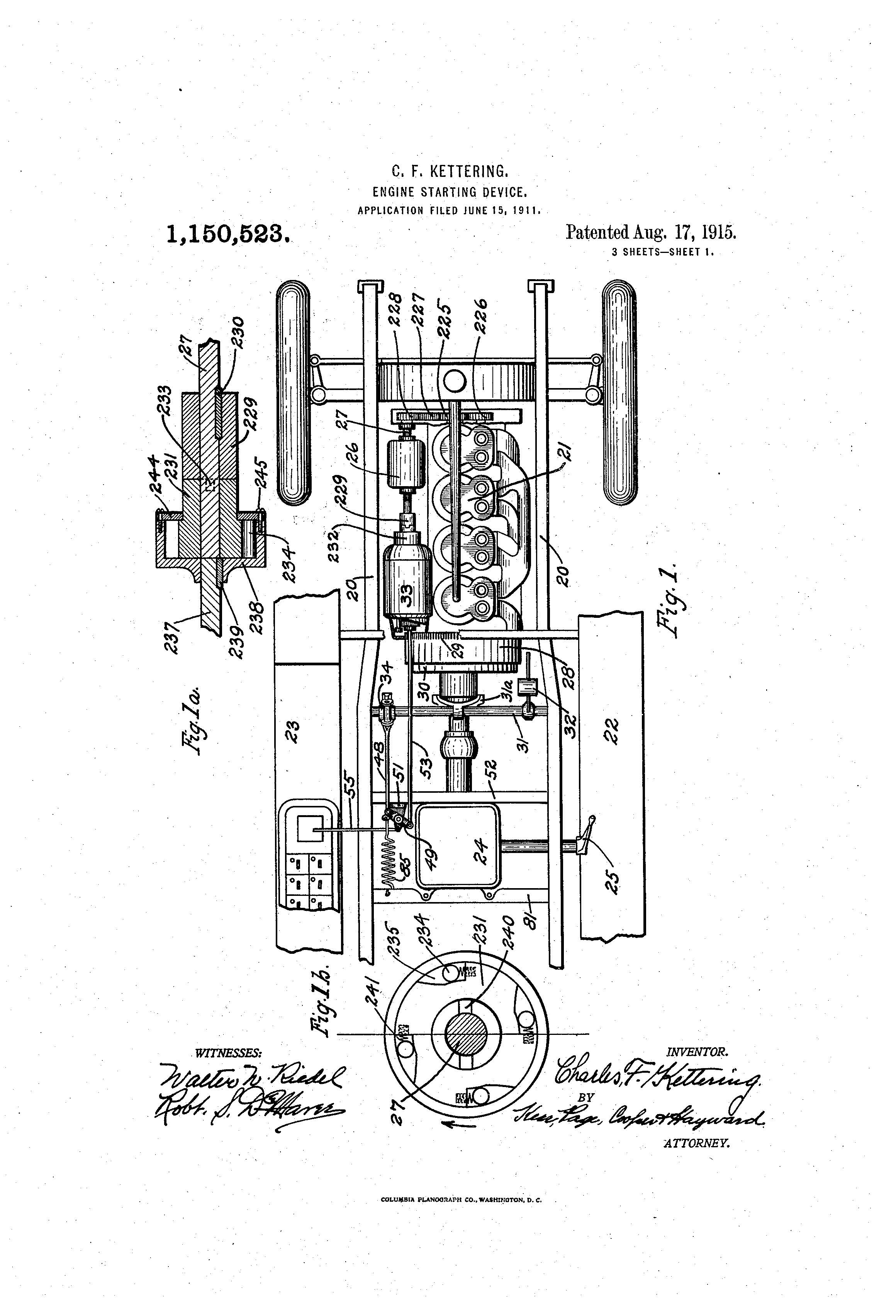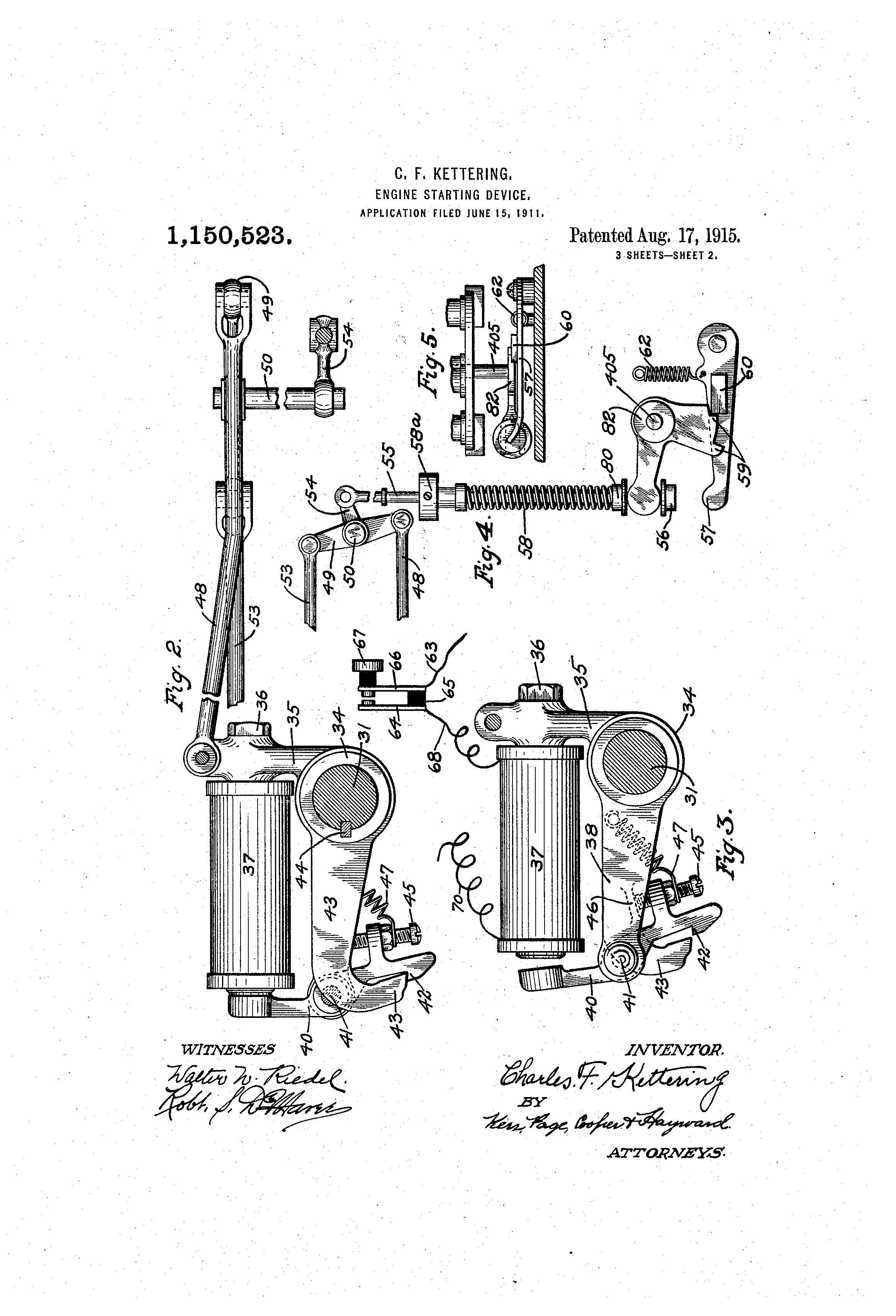On August 17, 1915, Charles Kettering was granted the patent for “Engine Starting Device”, U.S Patent No. 1,150,523.
Charles F. Kettering was born on August 29, 1876, in Loudonville, Ohio. After graduating high school, Kettering became a teacher. Students were engaged by his science demonstrations that included electricity, heat, magnetism, and gravity. He took some college classes at the College of Wooster but due to his poor eyesight, he was forced to drop out. He later transferred to Ohio State but was forced to drop out again due to his eyesight. He got a job as a foreman of a telephone line crew. He found ways to practically use his electrical engineering skills. Eventually, Kettering found proper glasses, returned to OSU, and graduated in 1904 with an electrical engineering degree.
After graduation, OSU recommended Kettering to the National Cash Register, a research laboratory in Dayton, Ohio. There he invented an easy credit approval system and the electric cash register. He deemed himself a practical inventor, often hanging around the sales team because “they had some real notion of what people wanted”.
In 1909, he and colleague Edward Deeds founded the Dayton Engineering Laboratories Company, also known as Delco. Prior to starting Delco, the two worked on automobile ignitions, specifically, high-energy spark ignitions. The advancements they made with the ignition sparked the idea of starting the company. Their goal was to enter the field of automobiles with their improved ignition.
Before the electric self-starting engine, drivers had to go to the front of their car and turn a hand crank to start the engine. This was at times dangerous and caused injury. In 1908, a close friend of Henry Leland, the Chief at Cadillac, died due to complications when an automobile crank broke his jaw. Leland’s engineers worked on an electric self-starter but their device was not practical due to its large size. Leland called Kettering and asked for his help.
The engineers at Delco worked around the clock to improve the engine Kettering and Deeds initially developed. They eventually came up with the Engine Starting Device. It had three purposes: starter, generator, and spark production for ignition and a current for lighting. It was placed in the 1912 Cadillac model and soon, other car companies began to use this new type of engine.
This invention relates to a system of devices for use in connection with starting mechanisms for engines, and is also applicable to such a system where the engine when started, is adapted to store up power to be used for similar future starting operations and various other purposes.
By the 1920s electric self-starters were standard in cars. In 1916, United Motors Corporation, now General Motors, purchased Delco and Kettering worked as Vice President. During his tenure at GM, he invented other items such as the spark plug, shock absorbers, leaded gasoline, and many more. Kettering obtained 186 patents in his lifetime.
Kettering died on November 25, 1958. He was the recipient of many awards such as the IEEE Edison Medal, and the Franklin medal, he also received honorary doctorate degrees and was inducted in the National Inventors Hall of Fame in 1979.
An inventor fails 999 times and if he succeeds once, he’s in. He treats his failures simply as practice shots –Charles Kettering.
Suiter Swantz IP is a full-service intellectual property law firm, based in Omaha, NE, serving all of Nebraska, Iowa, and South Dakota. If you have any intellectual property questions or need assistance with any patent, trademark, or copyright matters and would like to speak with one of our patent attorneys please contact us.



